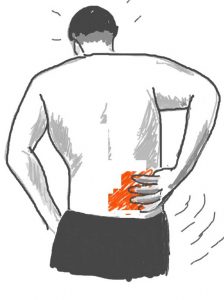March 2018, Dr Chee L Khoo
 Sometimes conclusions from a landmark scientific trial may be different from what we see in our own practice. The LESS trial (2014) found that epidural injection of glucocorticoids plus lignocaine offered minimal or no short-term (6 weeks) benefit as compared with epidural injection of lignocaine alone in the treatment of lumbar spinal stenosis (LSS). Yet, we all have some patients that have responded well to spinal injections. Is that because we select the right patient with the right pathology for injections?
Sometimes conclusions from a landmark scientific trial may be different from what we see in our own practice. The LESS trial (2014) found that epidural injection of glucocorticoids plus lignocaine offered minimal or no short-term (6 weeks) benefit as compared with epidural injection of lignocaine alone in the treatment of lumbar spinal stenosis (LSS). Yet, we all have some patients that have responded well to spinal injections. Is that because we select the right patient with the right pathology for injections?
In the LESS trial, 400 patients who had LSS with moderate to severe leg pains were randomised to either receive epidural injections of glucocorticoids with lignocaine or lignocaine alone. Pain and disability were scored using a disability questionnaire. At 6 weeks, there was no significant difference between the groups in disability or leg pain scores.
However, a recent retrospective observational study looked at the association between different spinal stenosis lesions and their response to epidural steroid injections. 516 patient samples were selected. Disc herniation patients had more responders for functional improvement than patients with fixed lesions (osteophytes). Patients with a single lesion also had better outcomes than patients with multiple lesions.
Had the patients in the LESS trial been stratified according to different spinal pathologies, perhaps the conclusions might be different. There was also no information on whether the patients had physical therapy in their management.
The evidence for the benefits of physical therapy for LSS has also historically been sparse. Previous recommendations based largely on evidence from patients with chronic back pain have advocated that if physical therapy is chosen, an active approach focused on exercise with manual therapy and instruction for an ongoing self-monitored exercise program should be used, as opposed to physical therapy approaches focused on use of passive modalities (e.g, ultrasound, moist heat, etc.).
Further, the specificity of imaging in LSS is notoriously poor. The symptoms of spinal stenosis are fairly non-specific. The differential diagnoses for chronic low back pain with sciatica can be osteoarthritis of the hip joints, piriformis syndrome, facet osteoarthritis or vascular claudication. One wonders whether many of the clinical trials included patients whose pain is not actually from spinal stenosis.
For a list of clinical indications for glucocorticoid injections click here.
Access the LESS trial here.
Reference
Friedly JL, Comstock BA, Turner JA, et al. A Randomized Trial of Epidural Glucocorticoid Injections for Spinal Stenosis. N Engl J Med. 2014;371:11–21
Weiner DK. Introduction to Special Series: Deconstructing chronic low back pain in the older adult: Shifting the paradigm from the spine to the person. Pain Med 2015;16:881–5.
Maus TP, El-Yahchouchi CA, Geske JR, Carter RE, Kaufmann TJ, Wald JT, Diehn FE. Imaging Determinants of Clinical Effectiveness of Lumbar Transforaminal Epidural Steroid Injections. Pain Med 2016 Dec: 17 (12);2176-2184
